Published in the Ocean Watch column, Honolulu Star-Advertiser © Susan Scott
Friday, October 3, 2008
Sick of economy-speak and election blather? Me, too. So here’s some different kind of news, all good and all turtles.
The UH Press has a new a book out, “The Book of Honu, Enjoying and Learning About Hawaii’s Sea Turtles,” by Peter Bennett and Ursula Keuper-Bennett (139 pages, $18.95).
The Canadian authors, both sport divers and underwater photographers, have visited Honokowai in West Maui annually since 1988. After seeing turtles there with tumors, the couple decided to combine their art, love of turtles and diving skills to help Hawaii’s honu.
And help they did. Over the years, the retired middle-school teacher and computer worker made 2,500 dives and took countless photos, becoming the first to document the natural regression of turtle tumors.
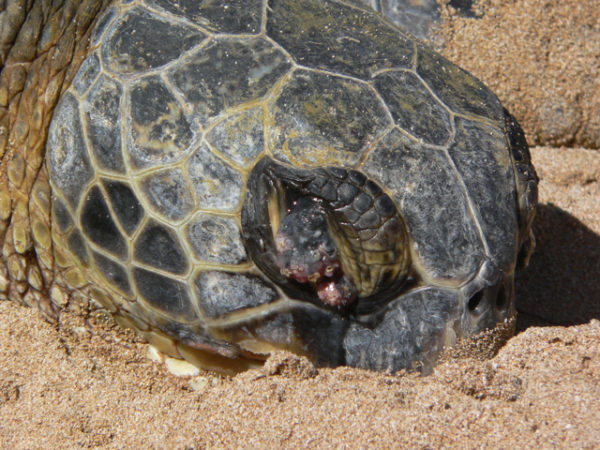
Tumor on eye of L-11 at Laniakea Beach.
The Bennetts’ story is a fine example of people using their unique skills and passions to help Hawaii’s wildlife.
Congratulations to these citizen scientists on providing turtle researchers with valuable information and in creating this beautiful book. The photos are fabulous.
Also, hats off to the U.S. Fish and Wildlife workers at Tern Island for rescuing 1,400 turtle hatchlings trapped in their nests this year. In addition, workers there also rescued 250 other hatchlings that made it out of their sometimes rocky and collapsing sand holes but then scurried away from the shore rather than toward it.
Since Tern Island was created by humans during World War II, and some of its beaches are not ideal nesting spots, it’s fitting that human hands give turtle hatchlings there a boost. Without such dedicated assistance, 1,650 perfectly healthy little turtles would have died.
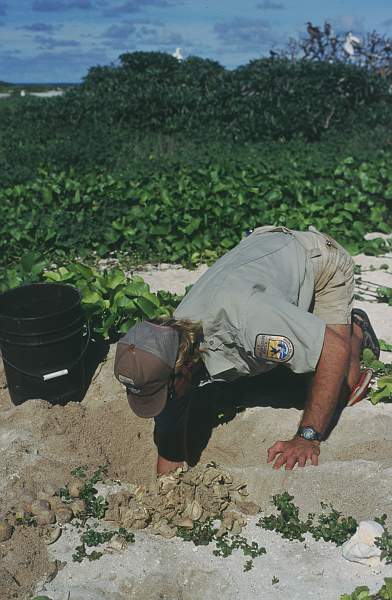
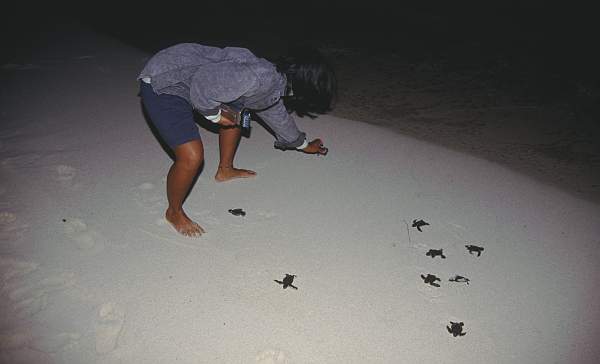
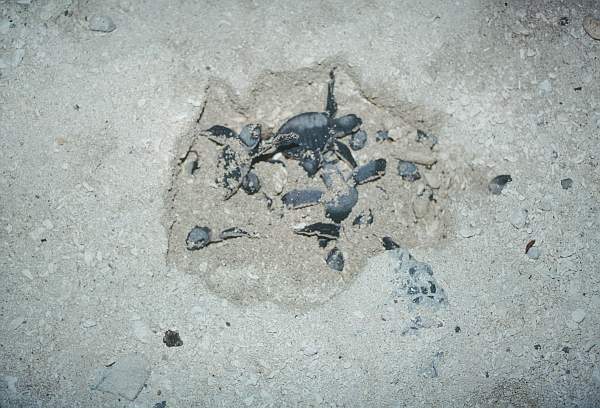
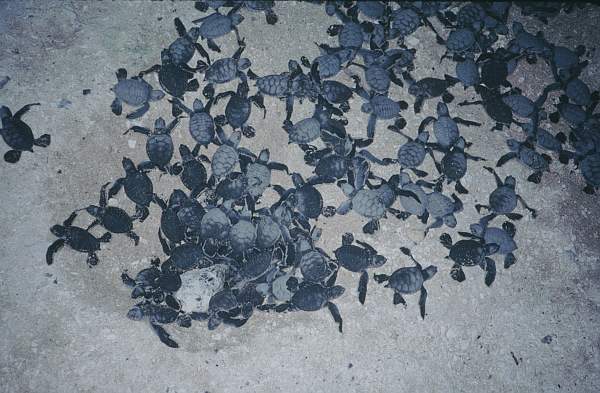
Helping turtles at Tern Island. More photos at the end of the column.
Another positive turtle report comes from Polihua Beach on Lanai, where a green turtle nest recently hatched, the first there in modern times. Only 33 of 104 eggs hatched, but still, that’s 33 little bundles of good news.
Because the top eggs in the shallow nest were near the surface, turtle biologist George Balazs theorized that high temperatures and low rainfall caused the hatch rate.
Turtles nested at Polihua in ancient Hawaii – and now they’re coming back.
So too are Hawaii’ hawksbill turtles, called ea in Hawaiian. Although they’re far behind the honu in terms of recovery, there’s hope. Between 1989 and 2007, researchers have tagged 86 hawksbills on the islands of Hawaii and Maui.
In 2006, hawksbills laid 36 nests on five beaches in the south of the Big Island. Volunteers protected the nests and were rewarded with 4,300 hatchlings reaching the ocean.
In Hawaii these turtles’ main foraging grounds, where they eat primarily sponges, are along the Big Island’s Hamakua Coast.
The distances turtles travel for food foraging is important. In a recently published paper, Balazs and colleagues report that DNA tests show Hawaii’s green turtles are a single genetic stock, separate from other Pacific island populations. This fact is crucial for conservation management because our turtles can now be assessed separately from other Pacific Ocean greens.
Countless volunteer hours went into all these positive pieces of turtle news. Inspired? The organization Malama na Honu, malamanahonu.org, needs volunteers at Oahu’s North Shore turtle beach, Laniakea.
Together we really do make a difference.
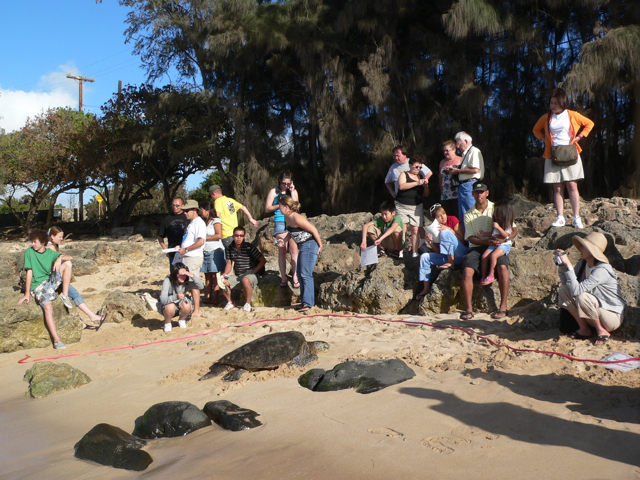
Volunteering at Laniakea Beach
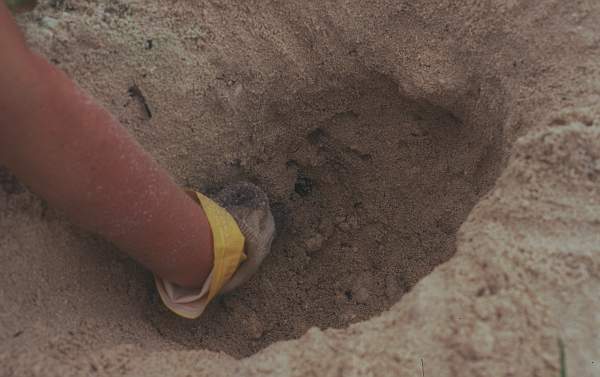
Digging out nest at Tern Island
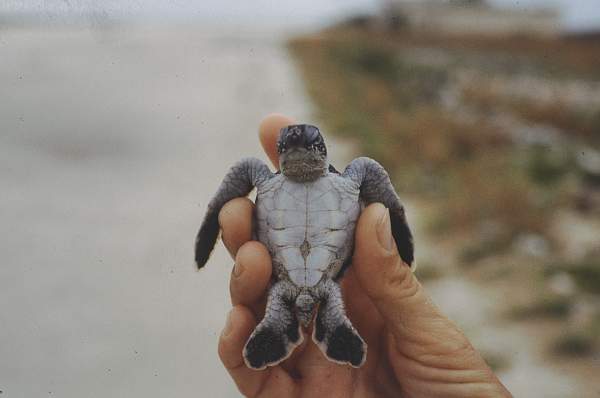
Rescued turtle, Tern Island.
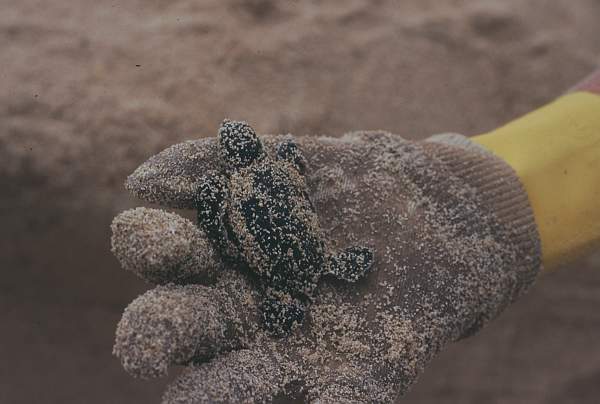
Rescued turtle, Tern Island.
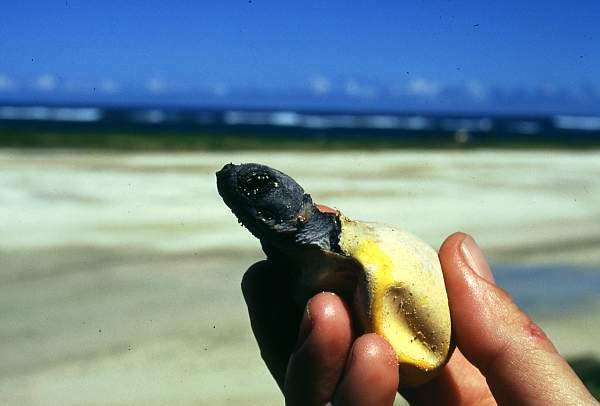
Turtle in egg, Tern Island.
Photos courtesy of Susan Scott & Scott Davis.